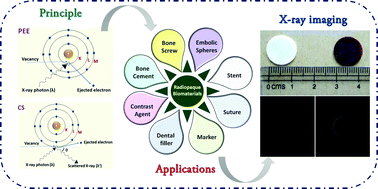Intrinsically radiopaque biomaterial assortments: a short review on the physical principles, X-ray imageability, and state-of-the-art developments
Abstract
X-ray attenuation ability, otherwise known as radiopacity of a material, could be indisputably tagged as the central and decisive parameter that produces contrast in an X-ray image. Radiopaque biomaterials are vital in the healthcare sector that helps clinicians to track them unambiguously during pre and post interventional radiological procedures. Medical imaging is one of the most powerful resources in the diagnostic sector that aids improved treatment outcomes for patients. Intrinsically radiopaque biomaterials enable themselves for visual targeting/positioning as well as to monitor their fate and further provide the radiologists with critical insights about the surgical site. Moreover, the emergence of advanced real-time imaging modalities is a boon to the contemporary healthcare systems that allow to perform minimally invasive surgical procedures and thereby reduce the healthcare costs and minimize patient trauma. X-ray based imaging is one such technologically upgraded diagnostic tool with many variants like digital X-ray, computed tomography, digital subtraction angiography, and fluoroscopy. In light of these facts, this review is aimed to briefly consolidate the physical principles of X-ray attenuation by a radiopaque material, measurement of radiopacity, classification of radiopaque biomaterials, and their recent advanced applications.



 Please wait while we load your content...
Please wait while we load your content...